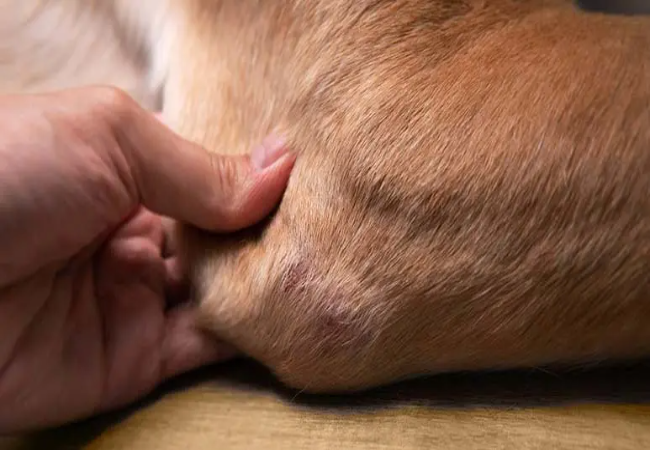Veterinary Guide to Canine Legg-Calvé-Perthes Disease 2025 🐶🩺

In this article
Canine Legg‑Calvé‑Perthes Disease Guide 2025 🩺🐶
By Dr. Duncan Houston BVSc
🧬 What Is Legg‑Calvé‑Perthes Disease?
Legg‑Calvé‑Perthes disease (LCPD) is a degenerative condition affecting the femoral head of young, small-breed dogs (usually < 25 lb). Due to interrupted blood supply, the femoral head undergoes aseptic (avascular) necrosis, collapsing and reshaping over time.
👥 Who’s at Risk?
- Age: Typically 4–12 months, peaking around 6–8 months.
- Breeds: Affenpinscher, Bichon Frise, Cairn/Silky/Scottish/Manchester/Toy terriers, Chihuahuas, Dachshunds, Mini Poodles, Westies, Yorkies, Poms, Pugs.
- Sex: No sex bias in dogs, unlike human cases.
- Heredity: Genetic component suspected; not recommended for breeding affected dogs.
- Trauma: Sometimes suspected trigger.
⚠️ Clinical Signs
- Hind limb lameness, limping, or toe-touching stance.
- Difficulty rising, playing, or climbing stairs.
- Pain on hip manipulation; reluctance to use affected leg.
- Thigh muscle atrophy and shortened limbs over time.
🔍 Diagnostic Approach
- History & exam: Age, breed, sudden limping, hip pain on palpation.
- X-rays: Key diagnostics: femoral head flattening, fragmentation, increased opacity, collapse, neck changes.
- Advanced imaging: MRI or bone scan is used if the X-ray is inconclusive.
🛠️ Treatment Options
1. Conservative Management (Mild Cases)
- Restricted activity, crate rest, and physical therapy.
- Anti-inflammatory pain relief (NSAIDs).
- Success is low (< 25% of cases) due to disease progression.
2. Surgical Intervention
- Femoral Head & Neck Ostectomy (FHNO): Most common; removes diseased bone, allowing formation of “false joint”; dogs typically bear weight within 2 weeks, full recovery by 2–3 months.
- Total Hip Replacement (THR): Recommended for larger breeds; replaces the joint entirely.
- Prognosis: Excellent long-term with surgery—almost all dogs regain mobility; some mild limp is possible, but pain-free.
📈 Recovery & Rehabilitation
- Early physical therapy (walking, swimming) supports muscle use and range of motion.
- Some dogs develop permanent limb shortening, but most adapt well.
- Long-term monitoring for osteoarthritis, especially if a non-surgical approach is used.
📈 Prognosis
- Surgical removal of the femoral head yields excellent outcomes—the majority walk pain-free and resume activities.
- Conservative treatment is less predictable; up to 75% may do poorly.
- Early presentation and rapid surgery result in the best recovery.
🏡 Prevention & Breeding Guidance
- Genetic link suspected; avoid breeding affected dogs.
- No known prevention; early detection and timely surgery are key.
📱 Ask A Vet Telehealth Support
- 📸 Upload videos of gait or X‑rays for remote specialist review.
- 🔔 Get surgery preparation and rehab reminders—meds, activity, physio.
- 🩺 Video consults to assess mobility, pain, and incision healing.
🎓 Case Spotlight: “Luna” the Westie
Luna, a 6‑month‑old West Highland Terrier, presented with a limp and hip pain. X‑rays confirmed the collapse of the left femoral head. She underwent FHNO and started gentle walking and hydrotherapy two weeks post-op. At 10 weeks, Luna was running again, with only a slight limp. Ask A Vet ensured medication adherence, guided physio sessions, and delivered joint supplements. Her owner now monitors her progress—Luna is playful and pain-free 🐾.
🔚 Key Takeaways
- LCPD is avascular necrosis of the femoral head in young, small-breed dogs, causing pain and lameness.
- Diagnosis via X‑ray imaging—shows flattening, fragmentation, and collapse of the femoral head.
- Conservative treatment is rarely effective; definitive treatment requires FHNO or THR.
- Post-op rehabilitation leads to excellent outcomes, with most dogs resuming normal activity.
- Avoid breeding affected dogs due to genetic risk.
- Ask A Vet telehealth supports every stage—from diagnosis to recovery monitoring and medication coordination 📲🐾
Dr Duncan Houston BVSc, founder of Ask A Vet. Download the Ask A Vet app to support your puppy through Legg‑Calvé‑Perthes—from gait assessment and X‑ray review to surgical planning, physio reminders, joint supplement delivery, and long-term telehealth follow-up 🐶📲






